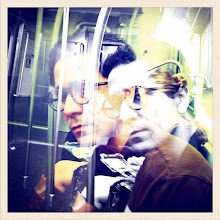
Andre Bazin (1918-58)
An Aesthetic of Reality: "The dramatic role played by the marsh is due in great measure to deliberately intended qualities in the photography. This is why the horizon is always at the same height. Maintaining the same proportions between water and sky in every shot brings out one of the basic characteristics of this landscape. It is the exact equivalent, under conditions imposed by the screen, of the inner feeling men experience who are living between the sky and the water and whose lives are at the mercy of an infinitesimal shift of angle in relation to the horizon. This shows how much subtlety of expression can be got on exteriors from a camera in the hands of the man who photographed Paisa."
An Aesthetic of Reality: "The construction introduces an obviously abstract element into reality. Because we are so used to such abstractions, we no longer sense them. Orson Welles started a revolution by systematically employing a depth of focus that had so far not been used. Whereas the camera lens, classically, had focused successively on different parts of the scene, the camera of Orson Welles takes in with equal sharpness the whole field of vision contained simultaneously within the dramatic field. It is no longer the editing that selects what we see, thus giving it an a priori significance, it is the mind of the spectator which is forced to discern, as in a sort of parallelepiped of reality with the screen as its cross section, the dramatic spectrum proper to the scene… “ The flattened axis of reduced depth becomes a three-dimensional figure by the manner in which it is received by the viewer. It is given intellectual dynamic and depth by the absorption (the viewer’s projection) of psychological impact into the scene.
An Aesthetic of Reality: "Thus, the most realistic of the arts… cannot make reality entirely its own because reality must inevitably elude it at some point. Undoubtedly an improved technique, skillfully applied, may narrow the holes of the net, but one is compelled to choose between one kind of reality and another. Future technical improvement [ ] will permit the conquest of the properties of the real (color and stereoscopy for example)… The quality of the interior shots will in fact increasingly depend on a complex delicate and cumbersome apparatus. Some measure of reality must always be sacrificed in the effort of achieving it." Bazin’s negative corollary to realism is metaphysical. Reality is compromised by the surrealism of equipment. At the opposite end, I would add that reality is further compromised by oversaturation possible with certain photographic apparatuses, such as the Zeiss lens.
Cabiria: "As for the characters themselves, they exist and change only in reference to a purely internal kind of time… Let us not say that the transformation of the characters takes place at the level of the “soul.” But it has at least to occur at that depth of their being into which consciousness only occasionally reaches down. This does not mean at the level of the unconscious or the subconscious but rather the level on which Jean-Paul Sartre calls the “basic project” obtains, the level of ontology. Thus [this type] of character does not evolve; he ripens or at the most becomes transformed..."
Cabiria: "If there are, still, tensions and climaxes in [certain films] which leave nothing to be desired as regards drama or tragedy, it is because, in the absence of traditional dramatic causality, the incidents in [these] films develop effects of analogy and echo. [A certain hero] never reaches the final crisis (which destroys him and saves him) by progressive dramatic linking but because the circumstances somehow or other affect him, build up inside him like the vibrant energy in a resonating body. He does not develop; he is transformed; overturning finally like an iceberg whose center of buoyancy has shifted unseen."




No comments:
Post a Comment